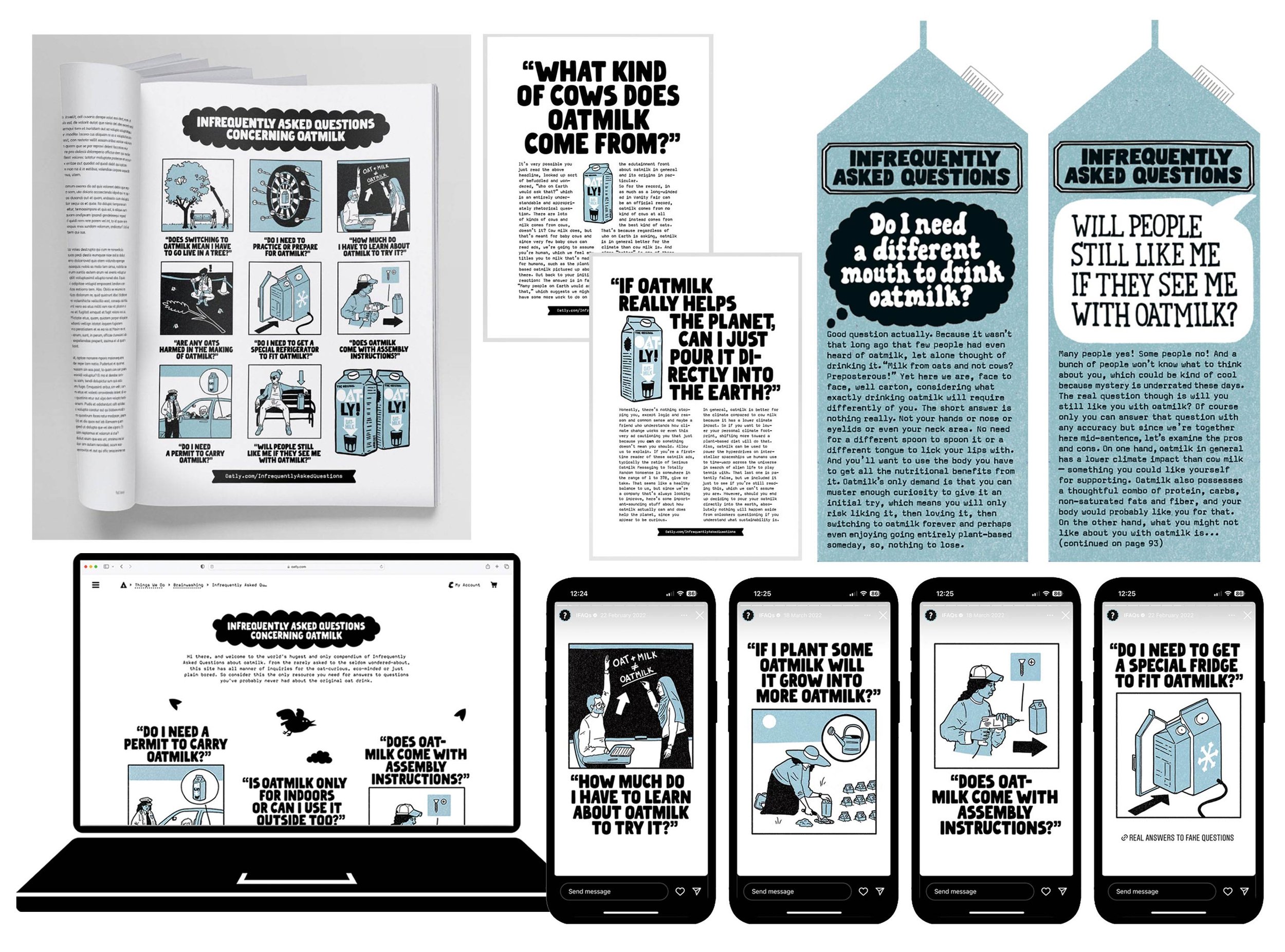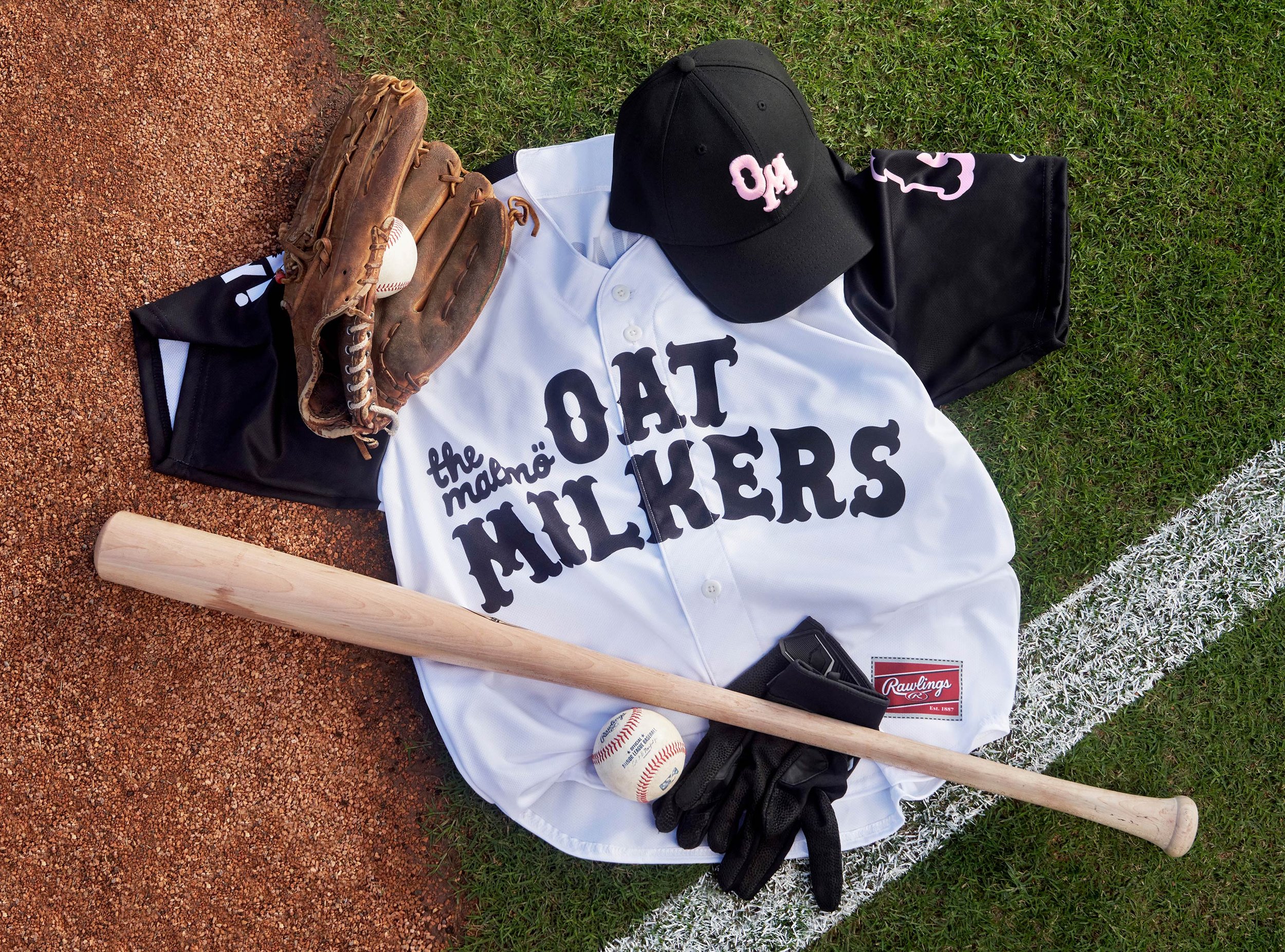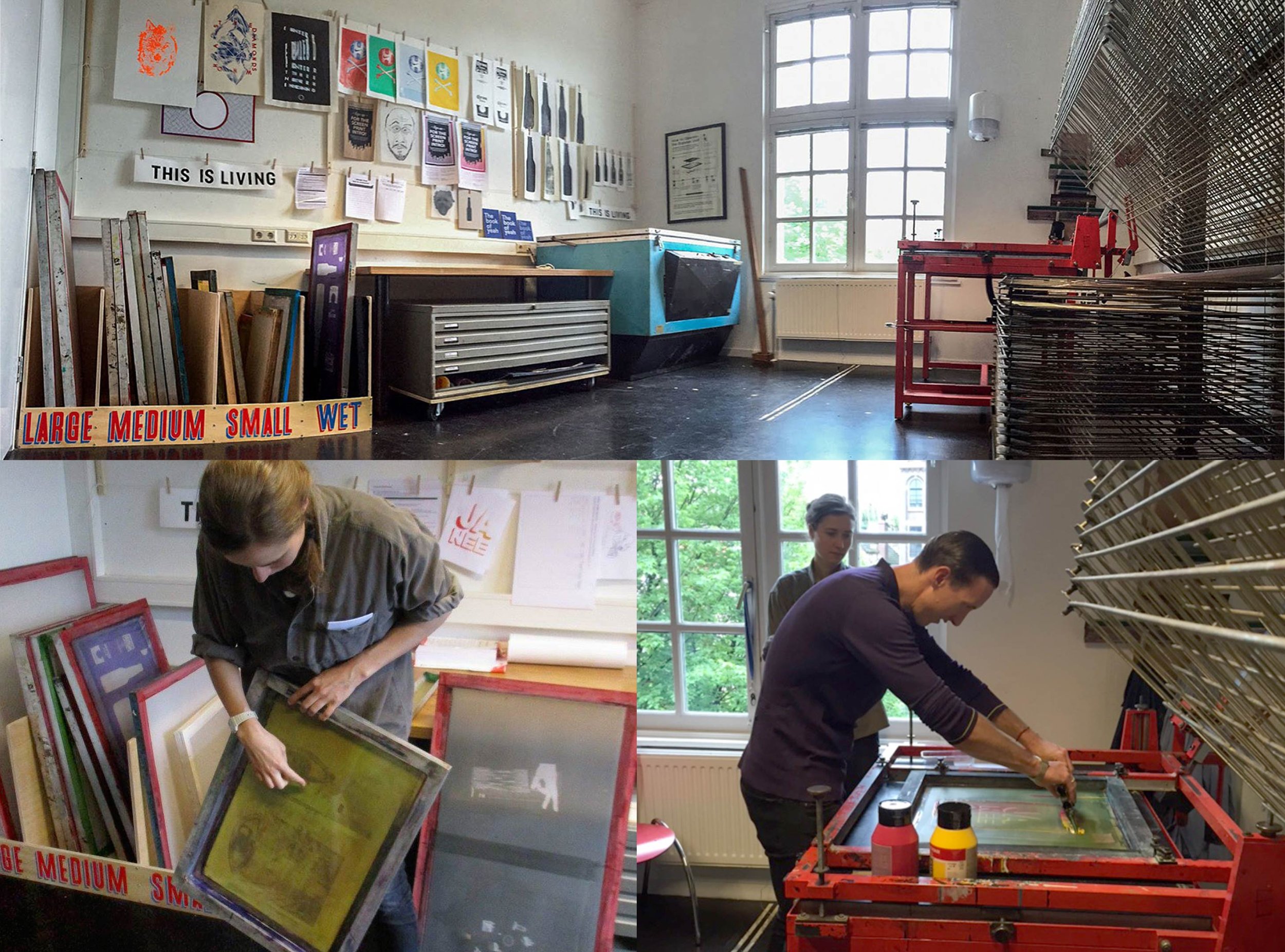Malia Killings
Malia Killings is a graphic designer, art director, illustrator, ceramicist, hiker, camper, skier, and carpenter based in Austin, Texas. A large portion of Malia’s career has been spent with Wieden+Kennedy working for a number of global brands including Nike, EA, Coca-Cola, Airbnb, Corona, KFC, and Milka. During her time at the agency, Malia also initiated proactive projects to improve the work experience of her colleagues, including teaching almost 180 coworkers how to screen print, helping with dozens of personal projects, and organizing a system for her colleagues to make use of the agency photo studio that was previously off-limits.
In 2021 Malia joined Oatly North America as Design Director. In 2024, her job title changed to include “Creative Director” to better reflect the role she has been playing in helping concept and guide the creative across campaigns, experiential, point of sale, and more.
Hi Malia! Tell us about yourself - how did you get to where you are today and when did you first become interested in design and illustration?
I first became interested in art as a small kid (as many of us who seek creative roles do) and knew I wanted to do something in my life that allowed me to draw. In my high school art class, we had a “commercial art” project of designing a logo, and that is when I discovered the existence of graphic design. I feel very lucky in finding something I love to do, that I could make a living doing.
After college, I wound up entering the world of advertising. Although this was a bit of a departure from my vision of working for a microbrewery or REI in the Pacific Northwest, it ended up being an incredible experience. Working at an ad agency gave me the opportunity to work with very talented people across a vast array of clients and projects. This is where I honed my skills in craft and production.
I ultimately left the agency world to explore working for brands that I felt more personally connected to in their product/ethos/aesthetic, and this is when Oatly entered the picture. It’s been a wonderful experience getting to work for a company that is trying to do its part in curbing climate change. And as a creative, we get to constantly challenge how we push the brand forward.
Designer Malia Killings
“Take pride in your work. Attention to detail. Always.”
How would you describe your aesthetic and how has your design style changed over time?
In general, I really try not to have a personal aesthetic. But of course, it’s like a thumbprint and sometimes inescapable. I do try to find something inherent to the brand or concept to help dictate where the aesthetic goes.
Overall, I love to create by hand when I can. This has evolved over time as my access to various tools has changed. At Wieden+Kennedy, we had a wonderful space to craft work with a photo studio, screen print studio, cut table, high res scanners, large format printers etc. Much of my favorite work I produced at the time is reflective of these tools—for example the Corona brand platform “This Is Living” that embraced the screen print Corona label as a cue for the resulting visual language.
Now, working fully remote and being away from the old studio space, I spend more time crafting things on the iPad and in Illustrator than previously. This, in combination with working for one brand rather than across dozens, my current work falls largely in the Oatly aesthetic.




Creative collaborators in above featured work: Thomas Payne (screen print), Kia Heinnen (art direction), Alvaro Sotomayor (creative direction)
You’re currently the Creative Director & Design Director at Oatly - what does a day on the job look like?
I work in the “Oatly Department of Mind Control,” which is essentially Oatly’s internal agency. A day on the job involves working closely with our small but mighty team on all creative output for North America. We support our sales team in the retail and food service spaces as well as with our trade shows. We develop work for partnerships such as Minor League Baseball. And we’re responsible for planning and developing what our future brand communications will be i.e. “campaign” work. As a Creative Director and Design Director, I get to work with designers, illustrators, photographers, directors, animators, and copywriters to bring our concepts to life, along with the support of our strategy, comms planning, PR, project management, and producers.





Creative collaborators in the above featured work: Eric Routenberg (copy), Kyle Ellingson (illustration), Lars Elfman (package design), Suzanne Steele (copy), Zeke Anders (director/photographer), Kay Wolfersperger (booklet design), Elsa Jenna (web design), Raluca Desa (experiential design), Alice Schoolcraft (photography), Maeve Hanlon (designer)
What’s been one of your favorite Oatly projects so far?
I really love the work I do at Oatly, so it is difficult to choose a favorite project or campaign. One that is top-of-mind (as it's currently running), is our partnership with Minor League Baseball. This year we’ve launched a (sort of?) baseball team, The Malmö Oat Milkers. Rather than be a set team of players, all 120 clubs are playing one game dressed in our hats and jerseys. We created a bunch of activities around the games such as trivia, VIP seat exchange, and a fan section. During the partnership over the last couple of years, we’ve produced a robust body of work including everything from short videos to homepage takeovers, outfield signage, animated boards, dozens of social posts, a frozen novelty bar sampling tour, and more.



Creative collaborators in above featured work: Raluca Desa (graphic design), Eric Routenberg (copy), Ben Sklar (photography)
What is your creative process like and how do you approach creative collaboration with your team?
One of the things I love about my field is that it’s generally trying to solve a problem. So the creative process starts there—what is the challenge? This is generally followed by a lot of research. And out of this research comes insights that can become a compass to steer the work. At Oatly, the ODMC determines its own ‘briefs’ for the main campaign work. We might start from a place that is product-focused, or environmentally focused, or from a particular cultural insight. Or maybe we start from a place of simply wanting to get folks to try our product and judge it for themselves. Wherever we start, the whole team works together to shape the work into the best it can be. Collaboration is key. I simply could not create good work in a vacuum. I’m sure it wouldn’t be particularly good if I did.
To have constructive collaboration, I try to remember to approach my day with a degree of naiveté. One of the guiding principles of my old agency, Wieden+Kennedy, was “walk in stupid every morning.” If one approaches their day from a place of learning, and open to hearing other ideas/opinions they can grow. Alternatively, if one comes into work thinking they already know everything, they’ll be harboring a fixed mindset and this might not lead to the best solution. I try my best to check my ego at the door, and I work best with others that have the same approach.
In addition to your incredible design work, you are a talented ceramic artist! How did you start working with clay? Tell us more about your practice.
I was first introduced to clay when I was very young, as a homeschooling project. I was maybe six years old, and cannot remember what I made at the time. Later on, I was lucky enough to have a ceramics program at my high school, and that is when I truly learned the basics of ceramics from wheel throwing, to recycling clay, mixing glazes, and loading kilns.
After a break from ceramics during college, I picked it back up as a weekly pastime in Portland OR, and later in Amsterdam. It was a great way to get away from my desk Tuesday evenings and 100% engage the brain and body in a different task.
I eventually managed to get my own wheel and kiln, and that was when I started to experiment more with different kinds of clays, working out particular sizes and forms I liked the best, and began developing my skills with color slips a bit more. During the pandemic, when the world had shut down, I was able to spend a lot of my off-work hours playing with clay. I’ve moved house a couple times the last couple years and I no longer have my equipment, but I hope to get back to it eventually.



What’s your philosophy on the importance of having personal projects in addition to your daily work?
My relationship with personal projects has evolved over time. At one point I was always working on something on the side, whether it be illustrating everyone’s birthday/Christmas cards, or building toy boxes, or sewing stuffed animals. More recently, I’m doing fewer of these activities and focusing more on spending free time outdoors.
I supposed my “philosophy” is– if you’re feeling inspired to make something, make it! If you need a break from the grind, get some space. Side projects should be fun and a source of energy.






What’s been one of your favorite pieces of advice you’ve received?
I think this may have been written in someone’s leaving email when they left Wieden (I’m sorry I cannot remember the exact origins). It went something like this: It’s up to you to make what you want to get out of a place. Don’t sit back and wait for things to magically happen for you. If there is something you want to do or make, take advantage of the tools and team mates you’re surrounded by while you have them, and go for it.
Many companies want to have employees with an entrepreneurial spirit, and more often than not (particularly in the creative industry), employers will encourage and reward initiative. Some of my favorite and most memorable moments were proactive projects, such as teaching screen printing, or launching an internal directory site where I took everyone’s portraits on their first day (dogs too). These projects were not only fun, they allowed me to challenge myself in different ways outside of the day-to-day, and made me a more well-rounded teammate for my colleagues.



What advice would you give to artists and designers just starting out?
A lot of creatives getting started in their careers will wonder what to put in their book and how to curate it. A good starting point is to put in the work you want to be doing. What is the work you want to be hired for?
Don’t be afraid to have a ‘personal work’ section. I personally love to see how people’s brains work when they’re not hindered by a brief or creating something supported by a huge team. This also helps indicate what gets you excited, and what sort of work you’re willing to go the extra mile for.
Take pride in your work.
Attention to detail. Always.
Thank you for sharing with us Malia! To view more of Malia’s work, visit her website and follow her on Instagram.
Malia was nominated by Noun Project. All art courtesy of Malia Killings.


